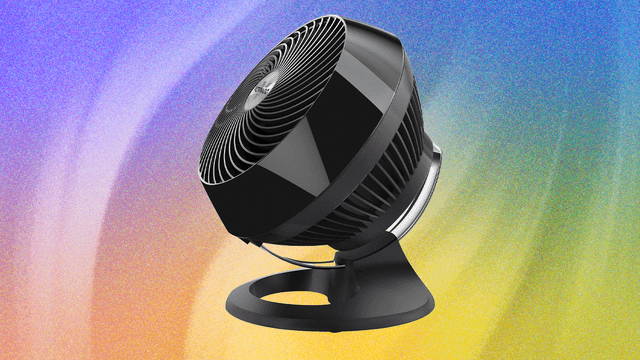The Best Pickleball Paddles for Beginners and Pros
All products featured on WIRED are independently selected by our editors. However, we may receive compensation from retailers and/or from purchases of products through these links. Learn more.
Featured in this article
The sport of pickleball—a cross between tennis and badminton, played with a hard plastic ball—is 60 years old, having been invented near Seattle in 1965. For most of that time, paddles were made of laminated wood and were mostly found in gym classes and retirement communities.
Pickleball has exploded in popularity, and with that newfound popularity comes an arms race with paddle makers in a quest to make the best pickleball paddles. Paddle technology is improving, too. This is my third year testing the latest crop of pickleball paddles, and the 2025 models have made another leap forward. Among my long-standing favorite paddles like the Selkirk Vanguard Control Invikta ($150), there are two new ones—including the Diadem Warrior BluCore ($280)—that step back from the raw power of heat-molded plastic cores by substituting foam cores that offer a very consistent and controlled feel. Here are my most up-to-date paddle picks for every style and level of play.
Updated July 2025: After testing 22 new paddles for this update, we've got a new pick for people who are going to be playing a lot, the Diadem Warrior BluCore paddle, as well as a new pick for people who prefer an open-throat paddle, and we’ve updated our review of Joola's Ben Johns Persus paddle to refer to the new version.
Also Recommended
Here are some other paddles I've really liked in testing, including some older models still on sale still worth considering.
Joola's Tyson McGuffin Magnus 3: This previous pick is still available used. Joola not only has the top-ranked player in the world but also number six, Tyson McGuffin. What I love about the McGuffin signature paddle is the sound. You may know that the sound of a pickleball game is quite controversial. I happen to like the sound (I do not live next to a pickleball court), and I like the sound of this paddle best of all. The hot-pink McGuffin paddle is one of the hottest on the market right now and frequently out of stock. It's a banger, using “Propulsion Core technology” that offers serious power, and I find myself too often hitting long with it. However, that sound. Pawwwwp. It's so satisfying. Pawwwwp. It sounds like a well-hit baseball by your favorite team to walk off in the bottom of the ninth.
How I Test Pickleball Paddles
I’m not an expert player (I'm somewhere between a 4.0 and a 4.5 on the USAP's Player Skill Rating), but I’ve now tested more than 100 paddles on indoor and outdoor courts over the past three years. At one point I played in a weekly pickleball league, though I don't anymore. I also test the paddles against a Slinger pickleball machine which is very helpful, as the machine consistently fires balls with a lot of spin and power. After playing with piles of paddles—and having players of various skill levels try them and share their thoughts—I feel confident that this guide has a paddle recommendation for you, whether you're a beginner or a pro pickleball player.
What Size Paddle Do You Need?
Pickleball paddles are restricted by a size formula similar to the one airlines use: The paddle can’t be longer than 17 inches and the combined length and width of the paddle cannot exceed 24 inches. A standard paddle is 16 inches long and 8 inches wide, but some elongated paddles use the full 17 inches and tend to have more power than wider options. There is no restriction on the thickness of the paddle; thin paddles can be about one-third of an inch thick, while thick paddles can be up to three-quarters of an inch thick.
What Does “Pop” Mean?
You'll see me using this term a few times in this guide. “Pop” is the pickleball parlance for how aggressively the ball bounces off the paddle face—you can think of it as an analogue to how "bouncy" a basketball is.
What Is Dwell Time?
The latest buzzword in pickleball circles is “dwell time,” which means how long the ball stays in contact with the face of the paddle before bouncing back off. Because your body is providing torque when you swing, the longer the balls sits—time measured in nanoseconds—on the face of the paddle the more spin will be created and the harder your shot will be to return. It gets very nerdy very quickly. I would love to speak about the dwell time of the paddles I've tested, but my personal sense of the number of nanoseconds the ball is in contact with the paddle is not appropriately fine-tuned.
How Much Do Pickleball Paddles Weigh?
There is no rule about a pickleball paddle's weight, but almost every paddle hovers around 8 ounces. I went out of my way to test the biggest range of paddles I could find and ended up testing paddles that were within about an ounce of each other. Light paddles tend to be about 7.5 ounces, whereas heavyweight paddles are about 8.5 ounces. More important is the distribution of that weight—paddles that offer more power tend to be top-heavy. I prefer paddles with a balanced feel.
Are All Pickleball Paddles the Same Shape?
Pickleball paddles tend to look fairly similar shapewise. In my testing, I tried several outliers, including a Joola paddle with a rounded shape more like a tennis racket, and several Selkirk paddles with a cutout between the paddle face and handle designed to minimize air resistance. I think the standard shape is still best.
What Are Pickleball Paddles Made Of?
Old-fashioned wooden paddles still exist, but inexpensive fiberglass paddles are how I started playing. You can nab a beginner set for $30 (see “Best for Beginners”), and it could be six months before you feel the need to upgrade. That said, the paddles recommended here tend to have a carbon-fiber face, which is stiff and light, offering lots of pop. I also tested some graphite paddles, which are cheaper, heavier, and softer than carbon fiber. If your budget doesn’t allow you to start with carbon fiber, I’d recommend starting with cheap fiberglass and then jumping to carbon fiber. Note that when I mention materials, I mean what's used for the face of the paddle—nearly all paddles have a similar honeycomb-shaped polymer core. Pricier paddles tend to cut that core in a way that creates even gaps on the edge and use heat-pressing to seal the face to the core.
Power up with unlimited access to WIRED. Get best-in-class reporting and exclusive subscriber content that's too important to ignore. Subscribe Today.






-Reviewer.png)






















